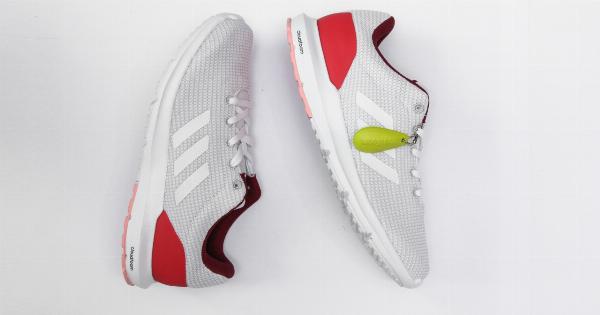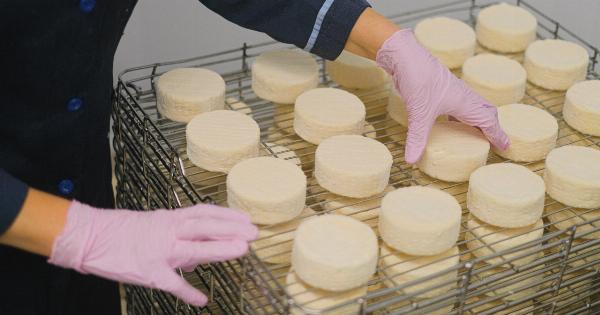Calcium is an essential mineral that plays a vital role in maintaining overall health.
It is crucial for the development and maintenance of strong bones and teeth, as well as for various bodily functions such as muscle contraction, nerve signaling, and blood clotting. Getting enough calcium is especially important during the Lenten season when many individuals choose to abstain from consuming meat and dairy products.
While dairy is often considered the primary source of calcium, there are plenty of alternative options that can help you meet your daily calcium needs without compromising your Lenten commitments.
Understanding Calcium Requirements
The recommended daily intake of calcium varies depending on age, sex, and life stage. For most adults and teenagers, the recommended dietary allowance (RDA) is about 1000 to 1200 milligrams (mg) per day.
However, for adults over the age of 50, the RDA increases to 1200 to 1500 mg per day.
Calcium Alternatives for a Dairy-Free Lenten Diet
1. Leafy Greens: Dark leafy greens such as kale, collard greens, spinach, and Swiss chard are excellent sources of calcium.
For instance, one cup of cooked collard greens contains approximately 266 mg of calcium, which is about 27% of the RDA for most adults. Including these nutrient-rich greens in your Lenten meal plans can significantly boost your calcium intake.
2. Fortified Plant Milks: Many plant-based milks, such as almond milk, soy milk, and oat milk, are often fortified with calcium to mimic the calcium content found in dairy milk.
Be sure to choose varieties that are fortified with calcium and aim for those that contain around 300 mg of calcium per serving.
3. Tofu: Made from soybeans, tofu is an excellent source of plant-based calcium. A half-cup serving of tofu typically contains around 434 mg of calcium.
Its versatility allows you to incorporate it into a variety of dishes, from stir-fries to smoothies, making it an excellent choice for meeting your calcium needs during Lent.
4. Chia Seeds: These tiny seeds are packed with nutrients, including calcium. Just one ounce (about two tablespoons) of chia seeds provides around 179 mg of calcium, making them an easy and convenient option to add to your diet.
You can sprinkle them on top of yogurt alternatives, mix them into smoothies, or use them as an egg substitute in baking.
5. Oranges: While not as high in calcium as some other options, oranges are still a valuable source of this essential mineral.
One medium-sized orange contains approximately 52 mg of calcium, which can contribute to your overall intake when combined with other calcium-rich foods.
6. Sesame Seeds: These tiny seeds are an excellent source of calcium. Just one tablespoon of sesame seeds contains around 88 mg of calcium.
You can sprinkle them on top of salads, stir them into your favorite dishes, or even make homemade tahini for a calcium-packed spread.
7. Beans and Lentils: Legumes, such as black beans, chickpeas, and lentils, offer a variety of health benefits, including calcium content.
Half a cup of cooked black beans provides approximately 60 mg of calcium, while the same serving of cooked lentils contains around 37 mg. Incorporating these plant-based protein sources into your meals during Lent can help boost your calcium intake.
8. Almonds: Almonds are not only a source of healthy fats but also contain calcium. A quarter cup of almonds provides about 95 mg of calcium. Enjoy them as a snack or add them to your meals for a nutrient boost.
9. Fortified Orange Juice: Some brands of orange juice are fortified with calcium, providing an alternative source for those who prefer drinking their nutrients.
Check the label to ensure that the orange juice is fortified with calcium and aim for varieties that contain around 350 mg of calcium per serving.
10. Seaweed: Often overlooked, seaweed is an abundant source of calcium. Certain types of seaweed, such as wakame and hijiki, can contain impressive amounts of calcium. For example, one tablespoon of wakame contains approximately 126 mg of calcium.
Incorporating seaweed into your diet can not only boost your calcium intake but also provide other essential minerals.
Combining Calcium-Rich Foods for Optimal Absorption
Pairing calcium-rich foods with sources of vitamin D, such as fortified plant-based milks, fortified orange juice, or exposure to sunlight, can enhance calcium absorption in the body.
Additionally, including foods that are rich in magnesium, such as nuts and seeds, can also support calcium absorption and utilization.
Consider Calcium Supplements
If you find it challenging to meet your daily calcium needs through diet alone, you may consider calcium supplements.
It is essential to consult with your healthcare provider before starting any new supplements to determine the appropriate dosage and ensure they are compatible with your individual health status.
Conclusion
Meeting your calcium needs during Lent without relying on traditional dairy products is entirely possible.
By incorporating a variety of calcium-rich alternatives into your diet, such as leafy greens, fortified plant milks, tofu, chia seeds, oranges, sesame seeds, beans and lentils, almonds, fortified orange juice, and seaweed, you can ensure you are getting enough calcium to support your overall health. Remember to combine these foods with sources of vitamin D and magnesium for optimal absorption, and consult with your healthcare provider if considering calcium supplements.
























